Facing the larger market in China and the world, domestic new smart home forces such as Huawei, Haier and Xiaomi, UIOT super smart home, and Oribo, and foreign terminal application giants such as Amazon, Google, and Apple have already entered the track. However, for many home consumers, the choice is often at a loss, and it is difficult for products of various sizes to be compatible and interconnected. What limits the problem in this regard? Smart home in the melee, how to achieve chip-level interconnection? Obviously, a hundred flowers bloom at the application level, and there is no way to restrict too much. This requires a bottom-level, chip-level interconnection solution.
Smart home in the melee, how to achieve chip-level interconnection?
IDC has predicted that China's smart home equipment market shipments will continue to grow at a compound growth rate of 21.4% in the next five years. In 2025, the market shipments will be close to 540 million units. The promotion of whole-house smart solutions in the consumer market will become a market One of the important drivers of growth. A report by Strategy Analytics also shows that global consumer spending on smart home products and services will exceed the $100 billion mark in 2021, and the smart home market will continue to grow to $173 billion (approximately $1,213.5 billion) by 2025. By then, nearly 20% of households around the world will have at least one smart home product in use, up from nearly 15% by the end of 2021.
Facing the larger market in China and the world, domestic new smart home forces such as Huawei, Haier and Xiaomi, UIOT super smart home, and Oribo, and foreign terminal application giants such as Amazon, Google, and Apple have already entered the track.
However, for many home consumers, the choice is often at a loss, and it is difficult for products of various sizes to be compatible and interconnected.
What limits the problem in this regard? Smart home in the melee, how to achieve chip-level interconnection?
Obviously, a hundred flowers bloom at the application level, and there is no way to restrict too much. This requires a bottom-level, chip-level interconnection solution.
Matter Standard Coming Soon
What is Matter?
Matter is an industry standard in the field of smart home, and its ultimate goal is to realize the "unification" of global smart home industry standards.
At Apple's WWDC conference in 2021, Apple's smart home products and services have been upgraded, but it is still suspected of "squeezing toothpaste", but Apple said a word: Apple will integrate Matter into Apple's smart home ecosystem in the future , support Matter ecological products.
The Matter standard was officially launched by the CSA (Connectivity Standards Alliance) alliance in May 2021. At that time, there were 170 participants. By 2022, there were more than 220 participants.
The Matter standard will provide a unified application layer to bring together multiple smart home ecosystems. At present, the types of smart single items are becoming more and more abundant. Manufacturers including Apple, Amazon, Samsung, Huawei, and Xiaomi have established their own independent smart home platforms. Consumers may buy smart devices of different brands at home. In many cases, these smart devices All are divided and controlled, so the ability to realize cross-system, cross-platform and even cross-ecological home connection and control and realize data sharing will be the key to future development. The Matter standard is designed to clear the pipeline for smart connections in all scenarios. At the same time, it does not restrict which wireless communication technology manufacturers use. Manufacturers can choose any wireless communication technology according to their own needs, including Wi-Fi, Bluetooth, and Zigbee.




